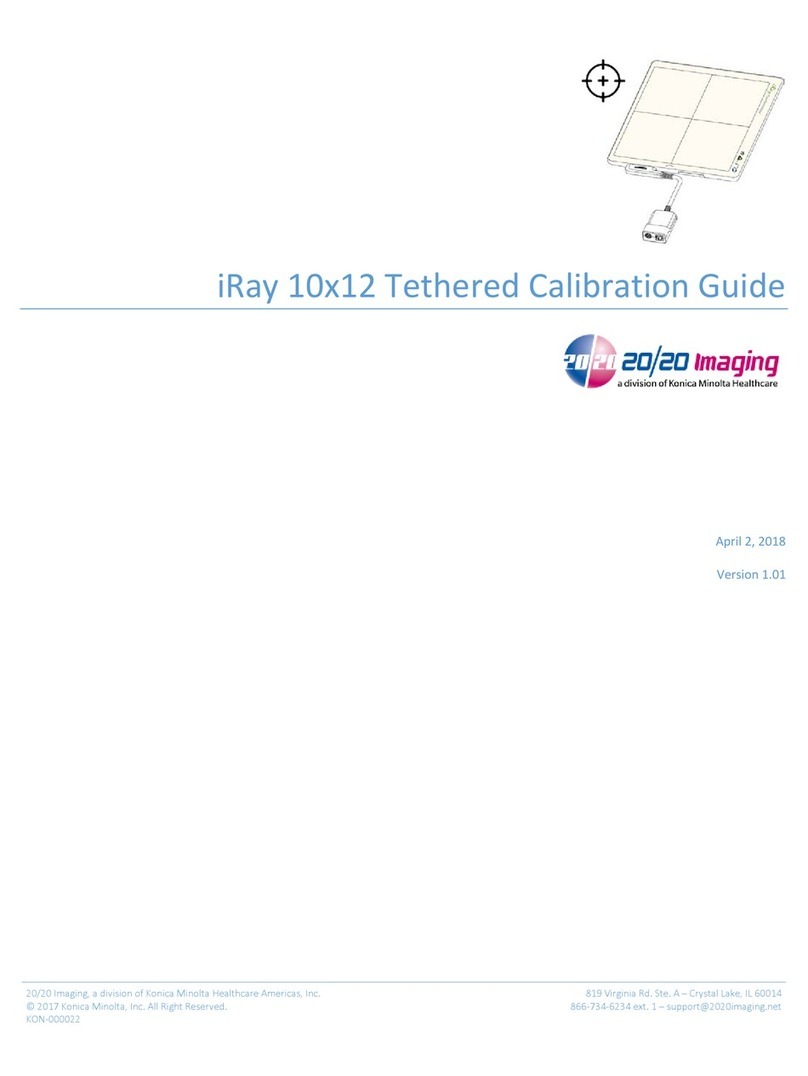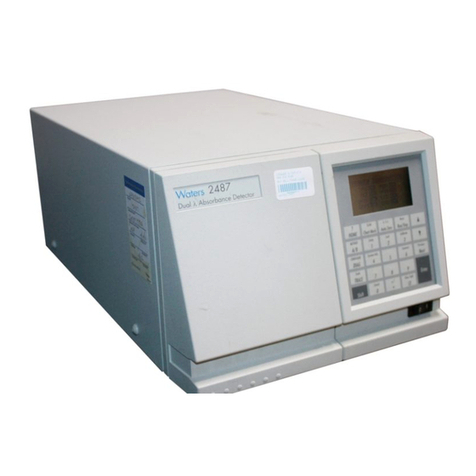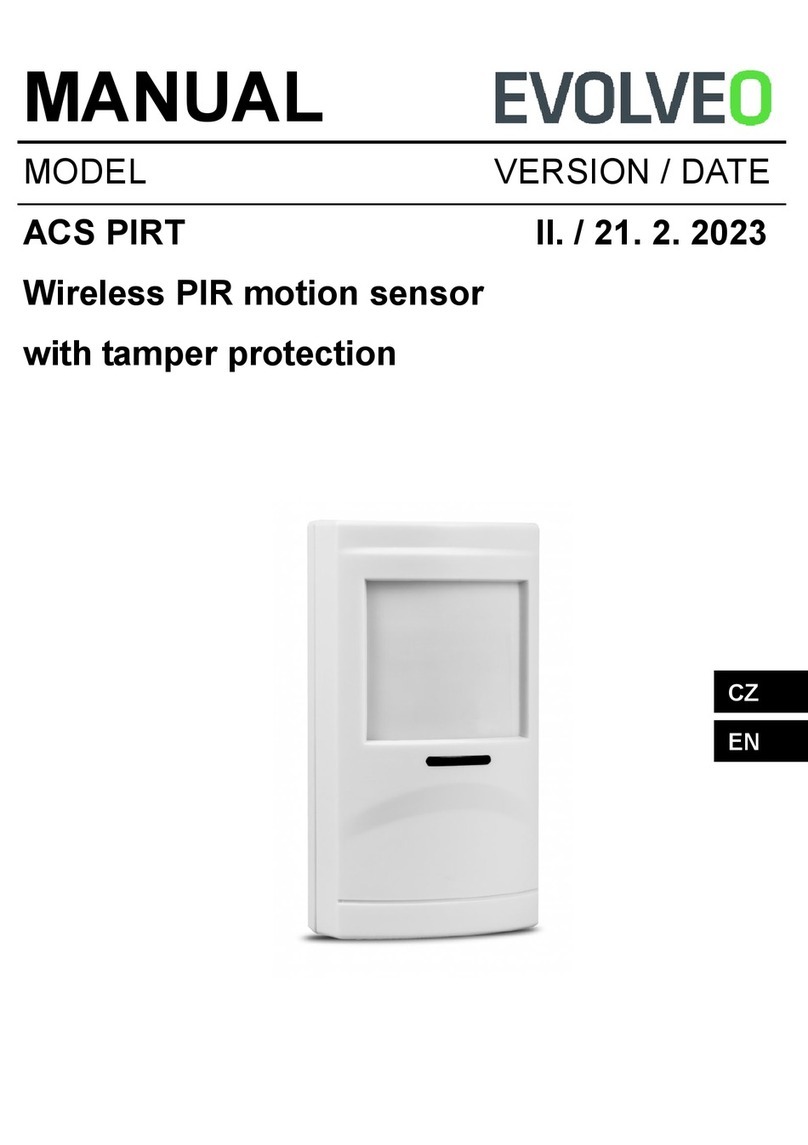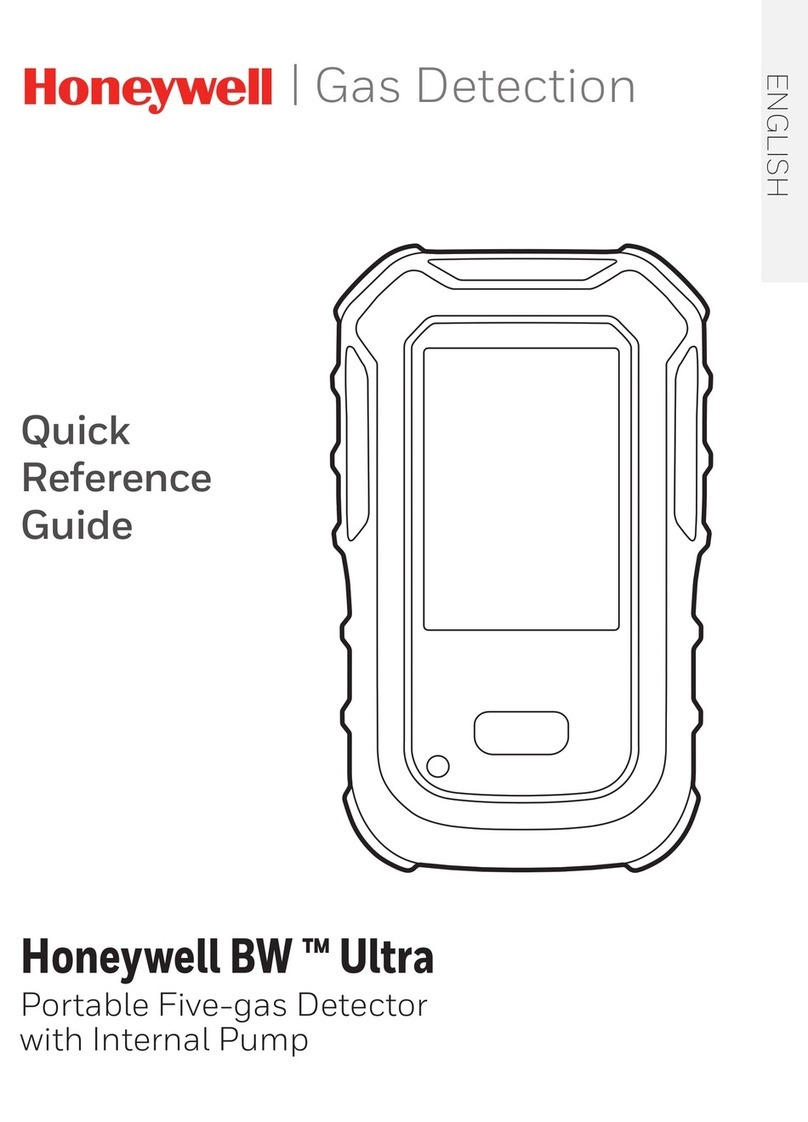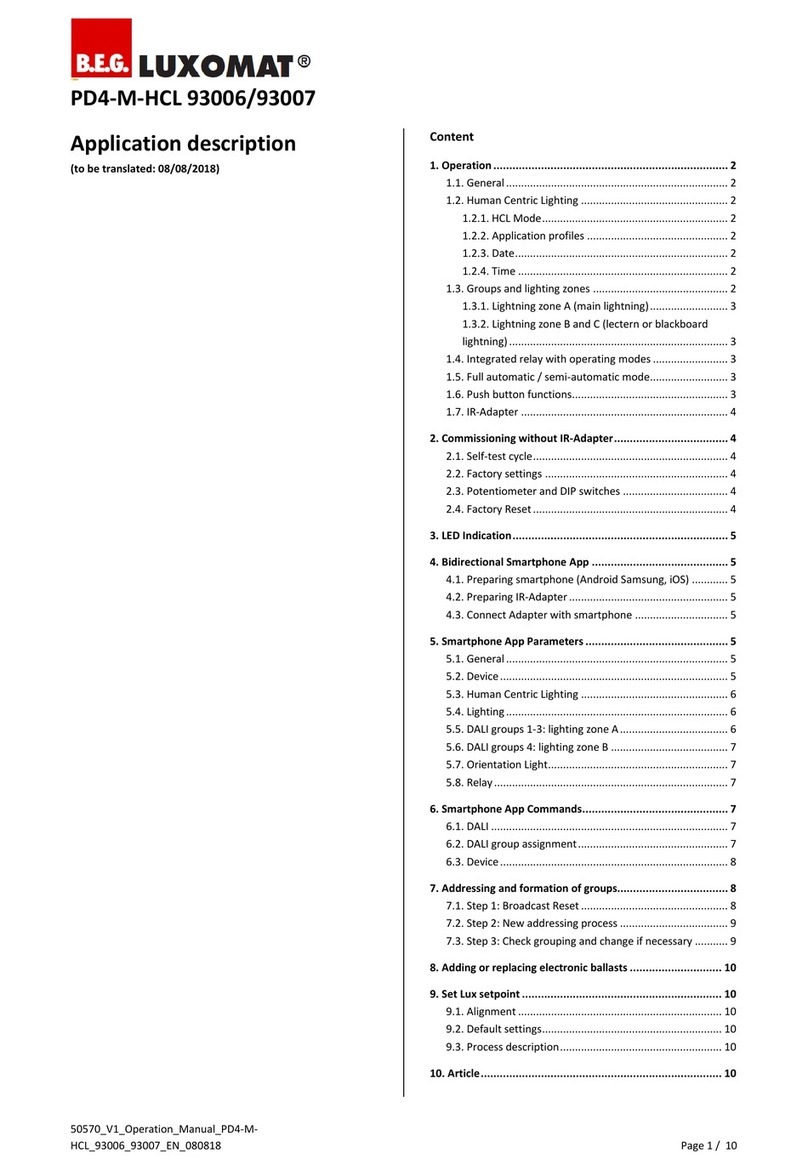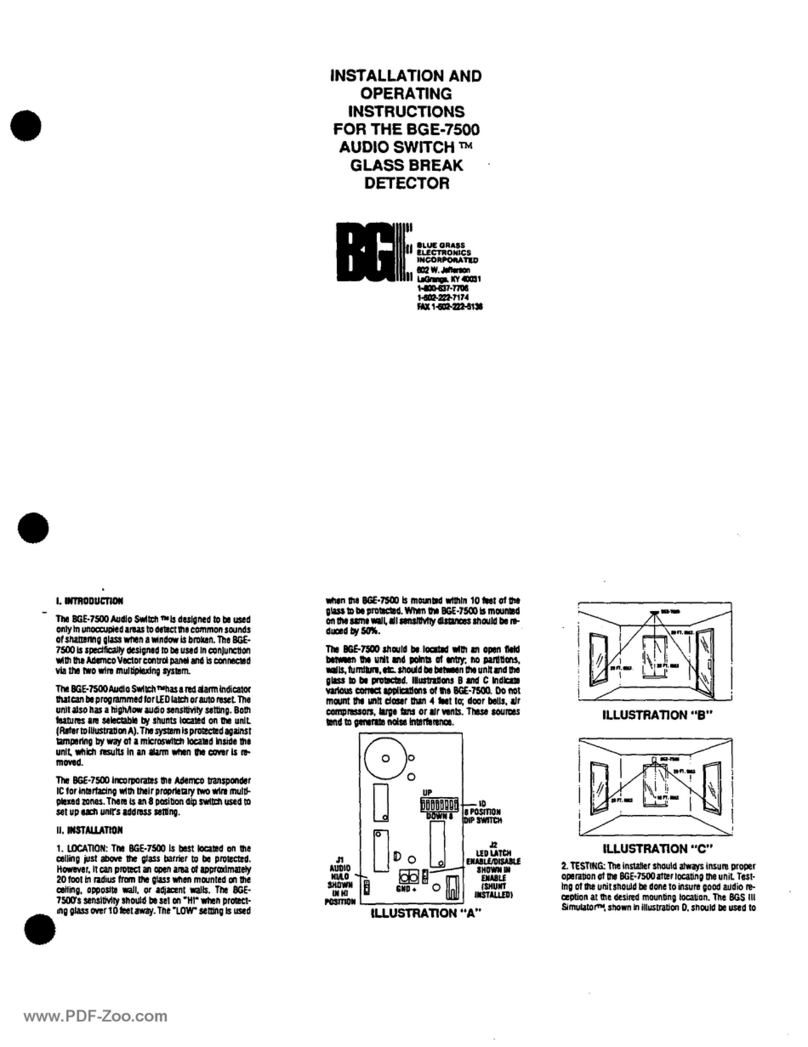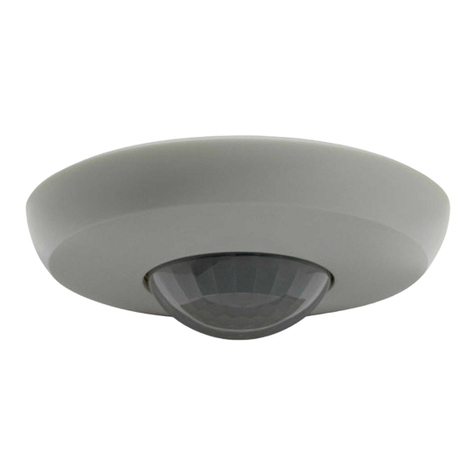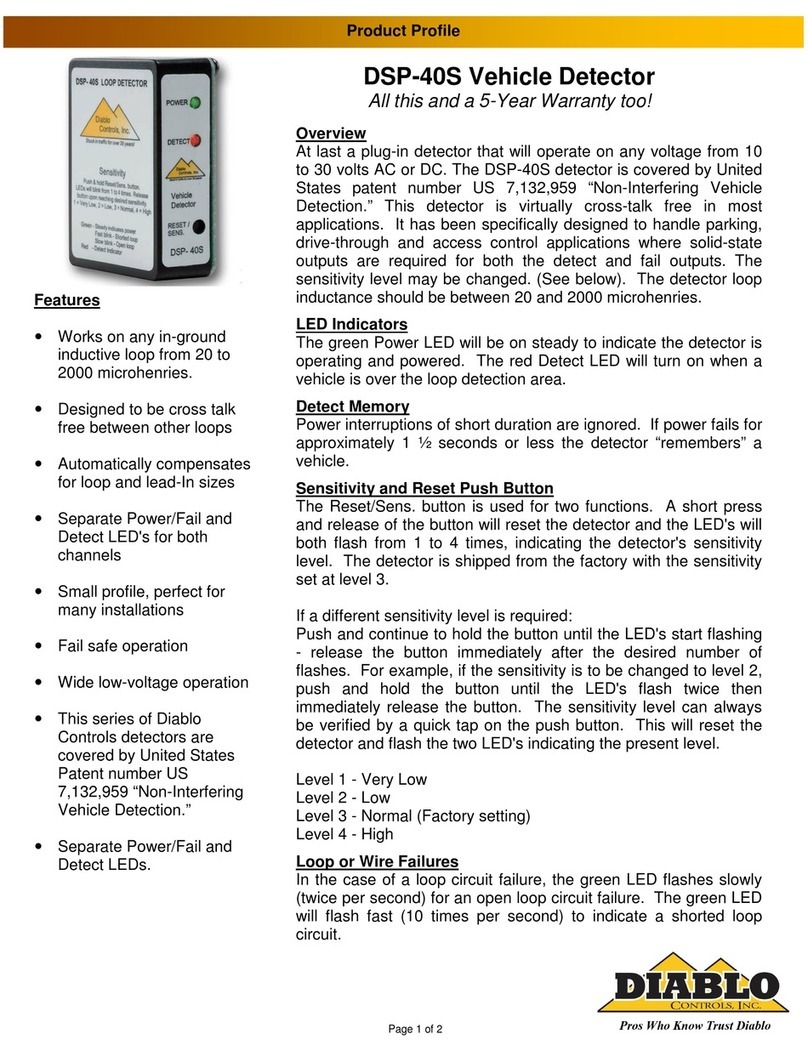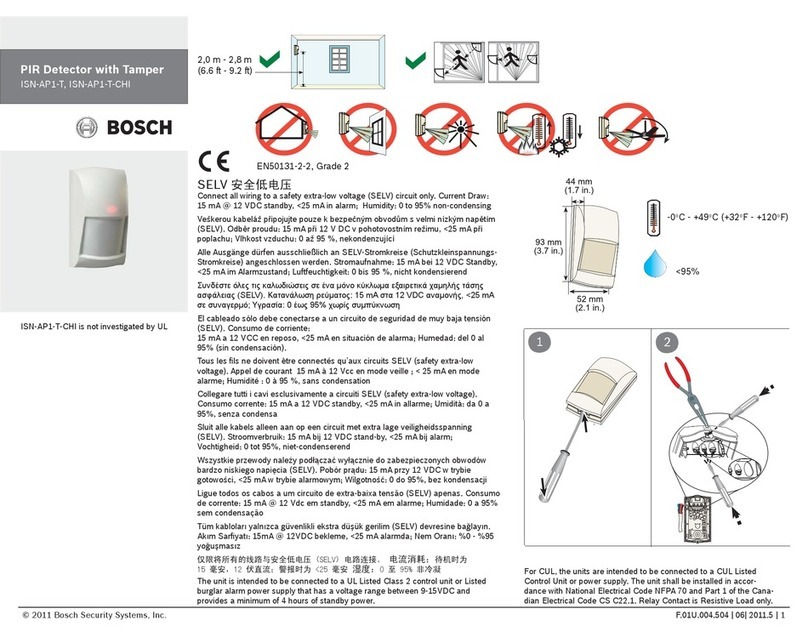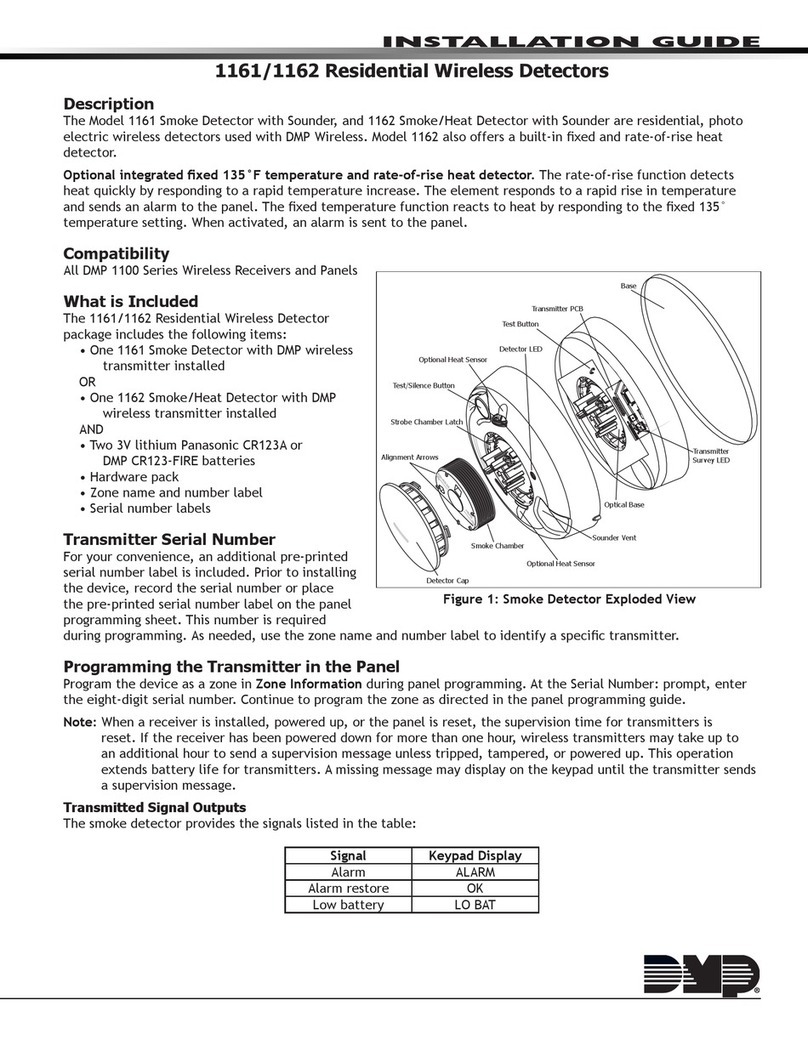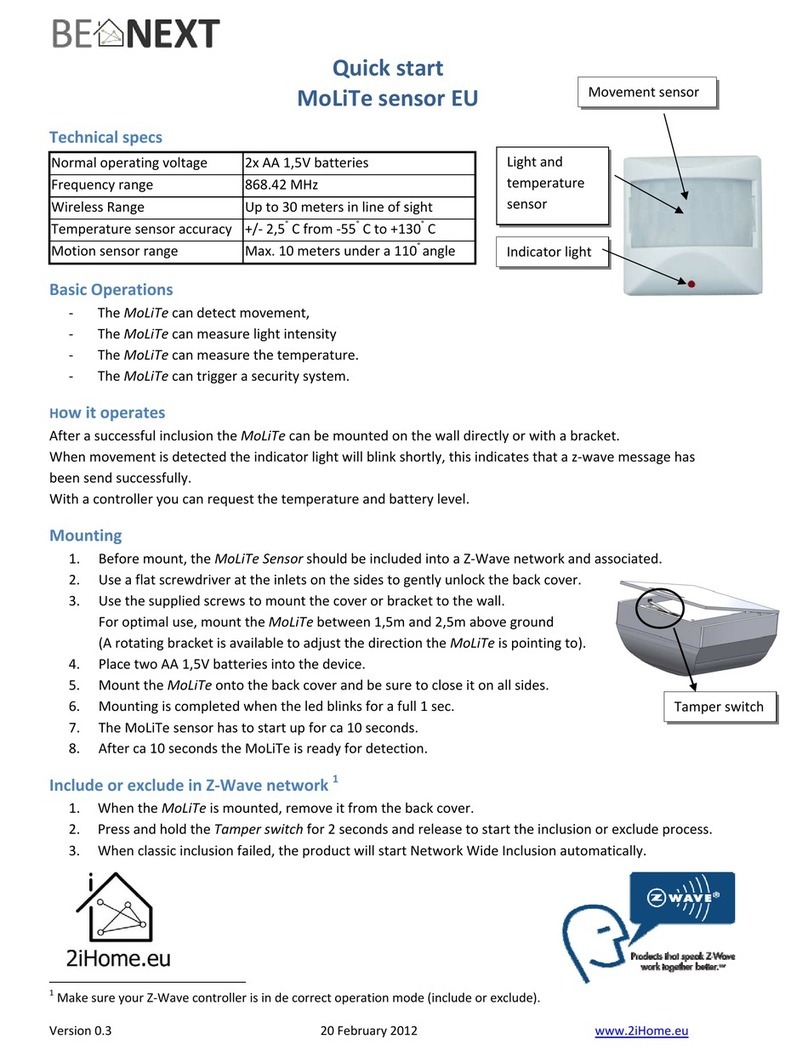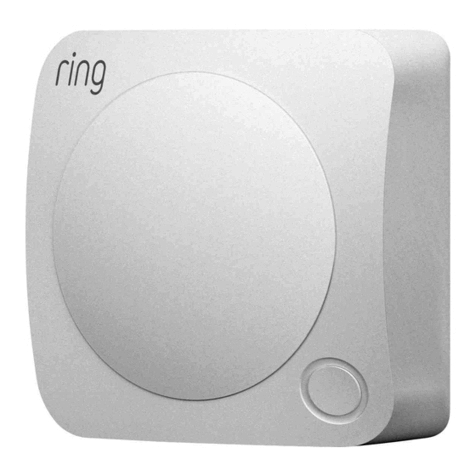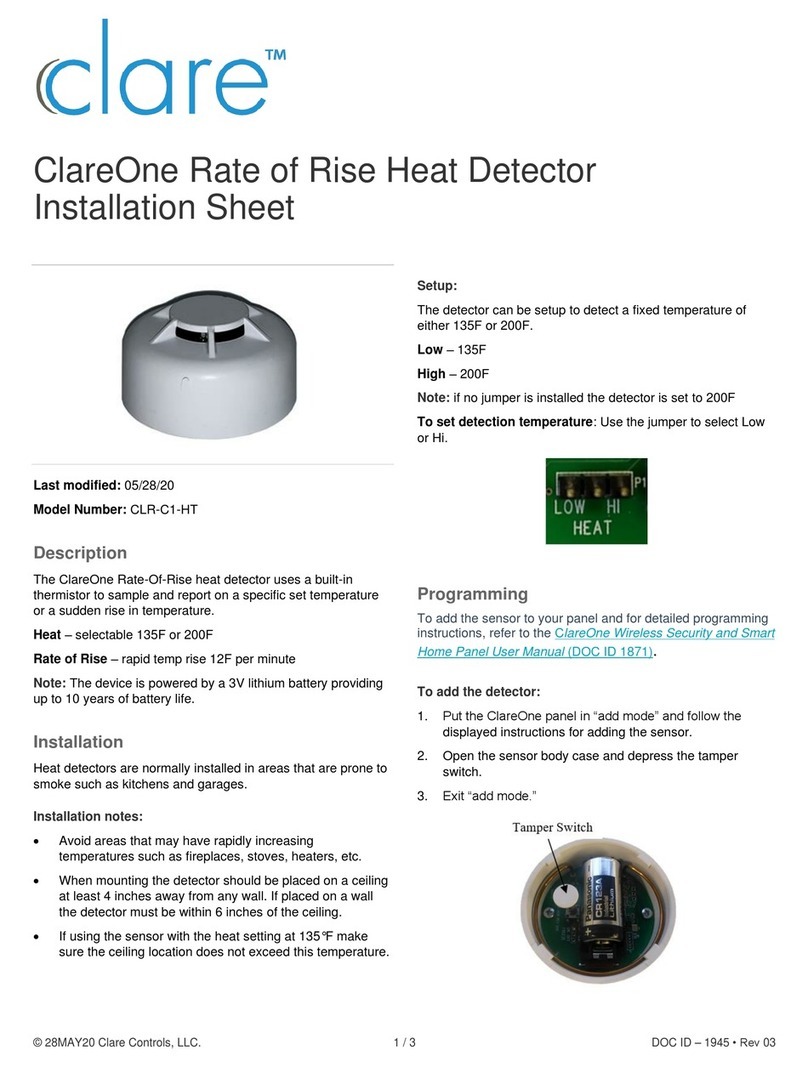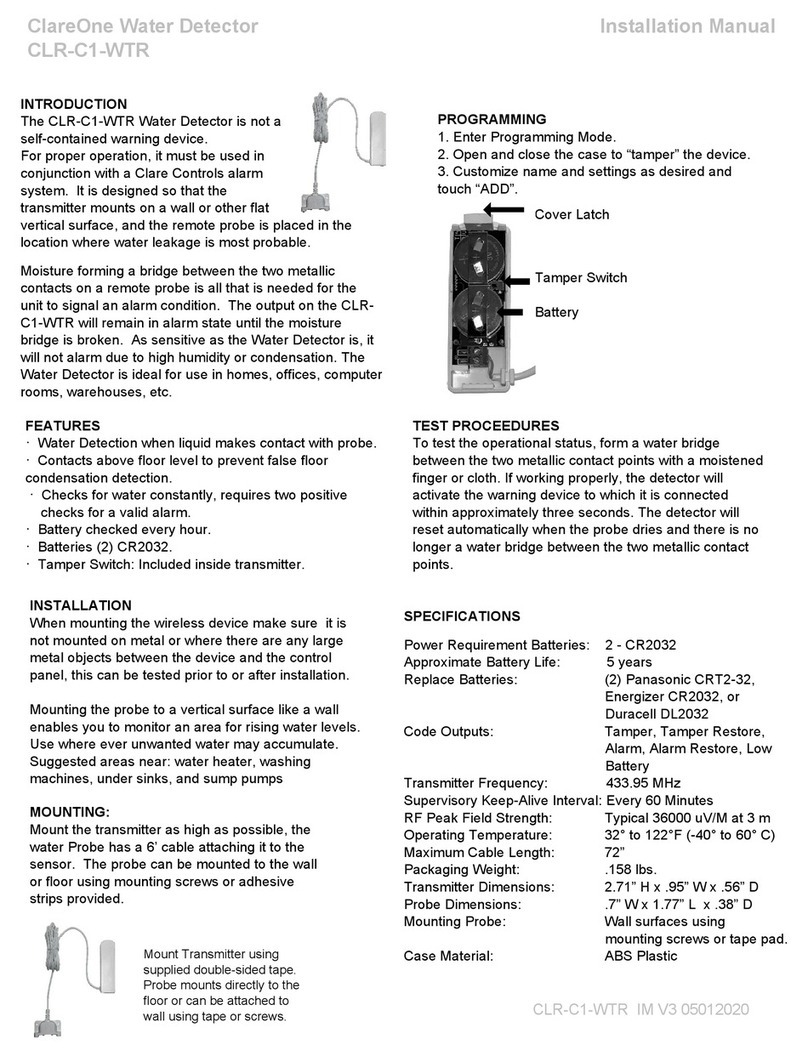DOC ID - 1942 • Rev 03 7 / 11
To enter accelerated functional gas test mode: Press the
Test button momentarily (approximately 1 second) while the
alarm is indicating CO presence.
The alarm will sound 2 x 4 temporal tone patterns to indicate
an alarm condition.
To return the unit to standby:
Place the alarm in clean air for a few minutes until the red LED
is no longer flashing.
When the alarm sounds
WARNING: Actuation of your CO alarm indicates the presence
of carbon monoxide (CO) which can cause death.
Act immediately when the CO detector alarms.
When the alarm sounds:
1. Press Reset/Silence button (only operational at
concentrations < 250ppm).
2. Call your local Fire Department or 911.
3. Immediately move to fresh air –outdoors or by an open
door/window. Do a head count to ensure that all persons
are accounted for. DO NOT re-enter the premises until the
first responders have arrived, the premises have been
aired out, and your alarm returns to its normal condition.
4. After following steps 1-3, if your alarm reactivates within a
24-hour period, repeat steps 1-3 and call a qualified
appliance technician to investigate for sources of CO from
fuel burning equipment/appliances and inspect for proper
operation of this equipment.
If problems are identified during this inspection have the
equipment serviced immediately. Note any combustion
equipment not inspected by the technician and consult the
manufactures’ instructions, or contact the manufacturers
directly, for more information about CO safety and this
equipment. Make sure that motor vehicles are not, and
have not been, operating in an attached garage or
adjacent to the residence.
Note: When ventilation is provided by leaving the window
and doors open, the CO build up may have dissipated by
the time help arrives and the alarm may have stopped
sounding. Although your problem may appear temporarily
solved it is crucial that the source of the CO is determined,
and appropriate repairs made.
Protecting your family
Follow these guidelines to reduce the risk of Carbon Monoxide
poisoning.
•Know and look out for warning signs that Carbon
Monoxide may be present. These include:
oThe CO alarm warning of abnormal levels
oStaining, soot marks or discoloration on or around
appliances
oA pilot light frequently going out
oA strange smell when an appliance is operating
oA gas flame which is yellow or orange, instead of the
normal blue
oFamily members (including pets) exhibiting the “flu-
like” symptoms of CO poisoning as described above.
If any of these signs are present, get the appliance
serviced before further use. If feeling ill, get
immediate medical help.
•Choose all appliances and vehicles which burn fossil fuels
such as coal, oil, natural gas, propane, kerosene, wood,
gasoline, diesel, charcoal, etc. with care and have them
professionally installed and regularly maintained.
•These appliances must “breathe in” air to burn the fuel
properly. Know where the air comes from and ensure
vents remain unobstructed (particularly after any
construction or remodeling work).
•The appliances must also “breathe out” waste gases
(including the CO) –usually through a flue or chimney.
Ensure chimneys and flues are not blocked or leaking and
get them checked every year. Check for excessive rust or
cracks on appliances and pipe work.
•Never leave your car, motor bike or lawnmower engine
running in the garage with the garage door closed. Never
leave the door from the house to the garage open if the
car is running.
•Never adjust your own gas pilot lights.
•Never use a gas stove, cooktop or a barbecue grill for
home heating.
•Children should be warned of the dangers of CO
poisoning and instructed never to touch or interfere with
CO alarms. Do not allow small children to press the Test/
Hush button as they could be subjected to excessive noise
when the alarm sounds.
•Leaving windows or doors slightly open (even a few
inches) significantly reduces the risk of high levels of CO
occurring. The high levels of draught-proofing in modern
houses reduces ventilation and can allow dangerous
gases to build up.
•Install CO alarms in all the areas recommended in this
booklet.
•Recognize that CO poisoning may be the cause when
family members suffer from “flu-like” symptoms when at
home but feel better when they are away for extended
periods.













